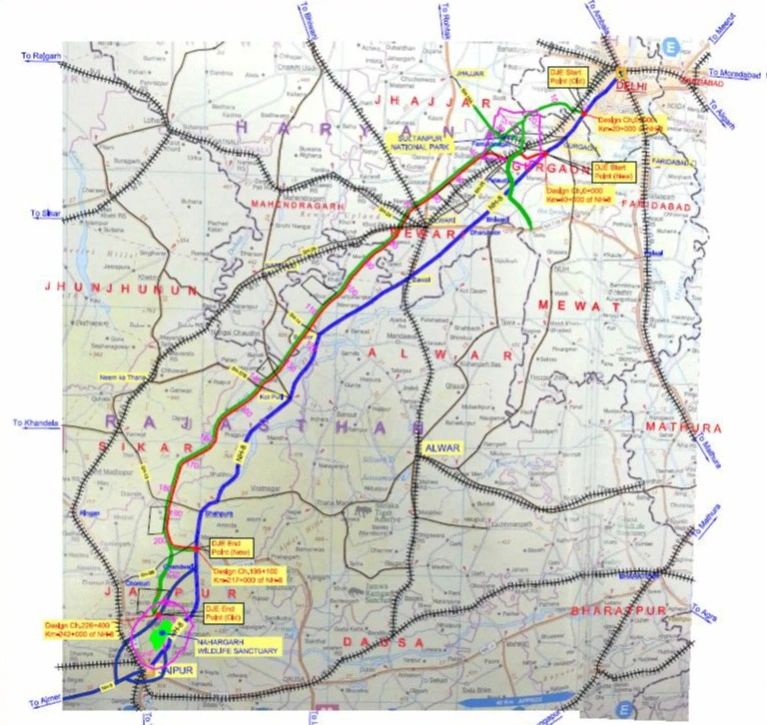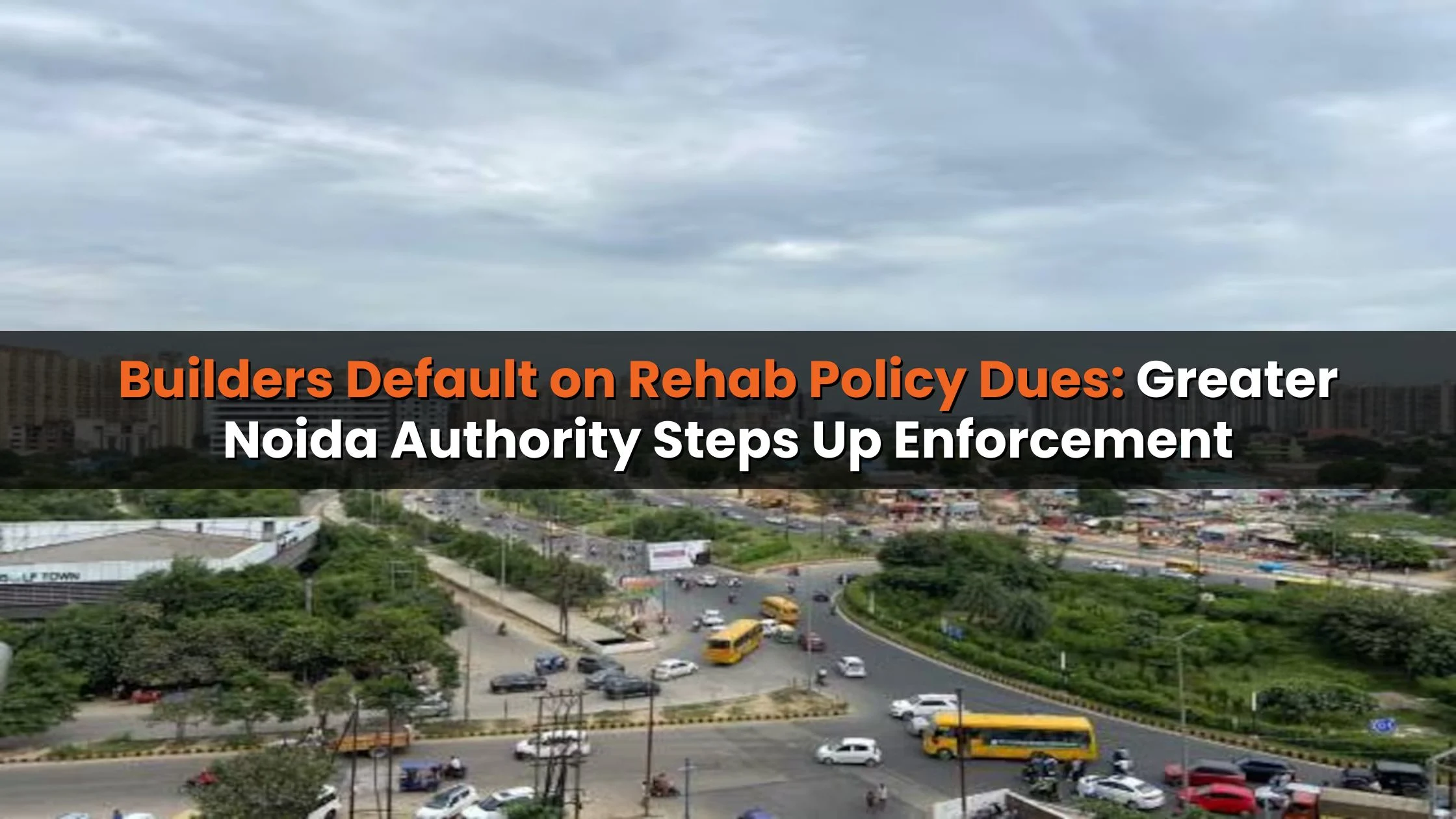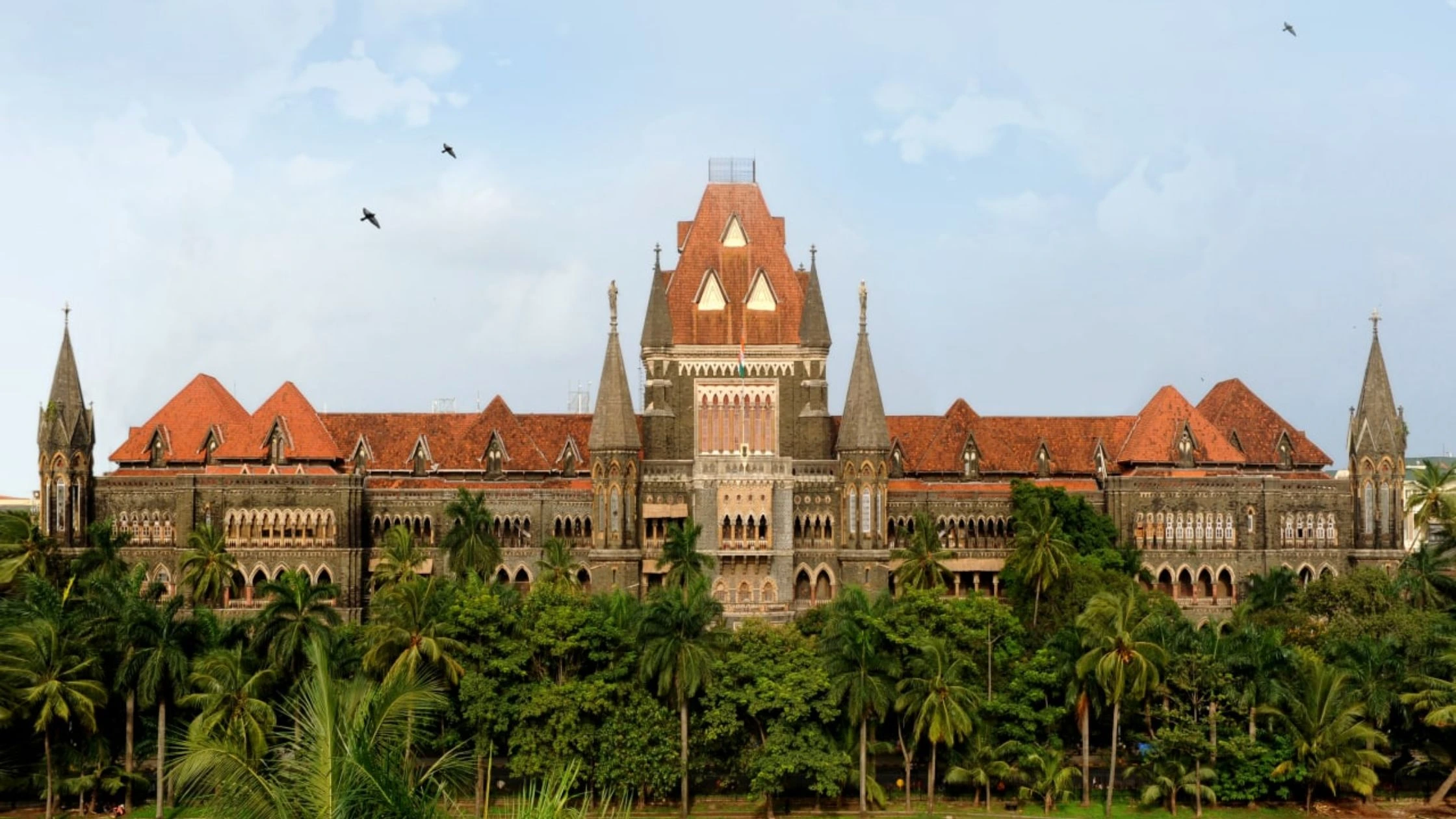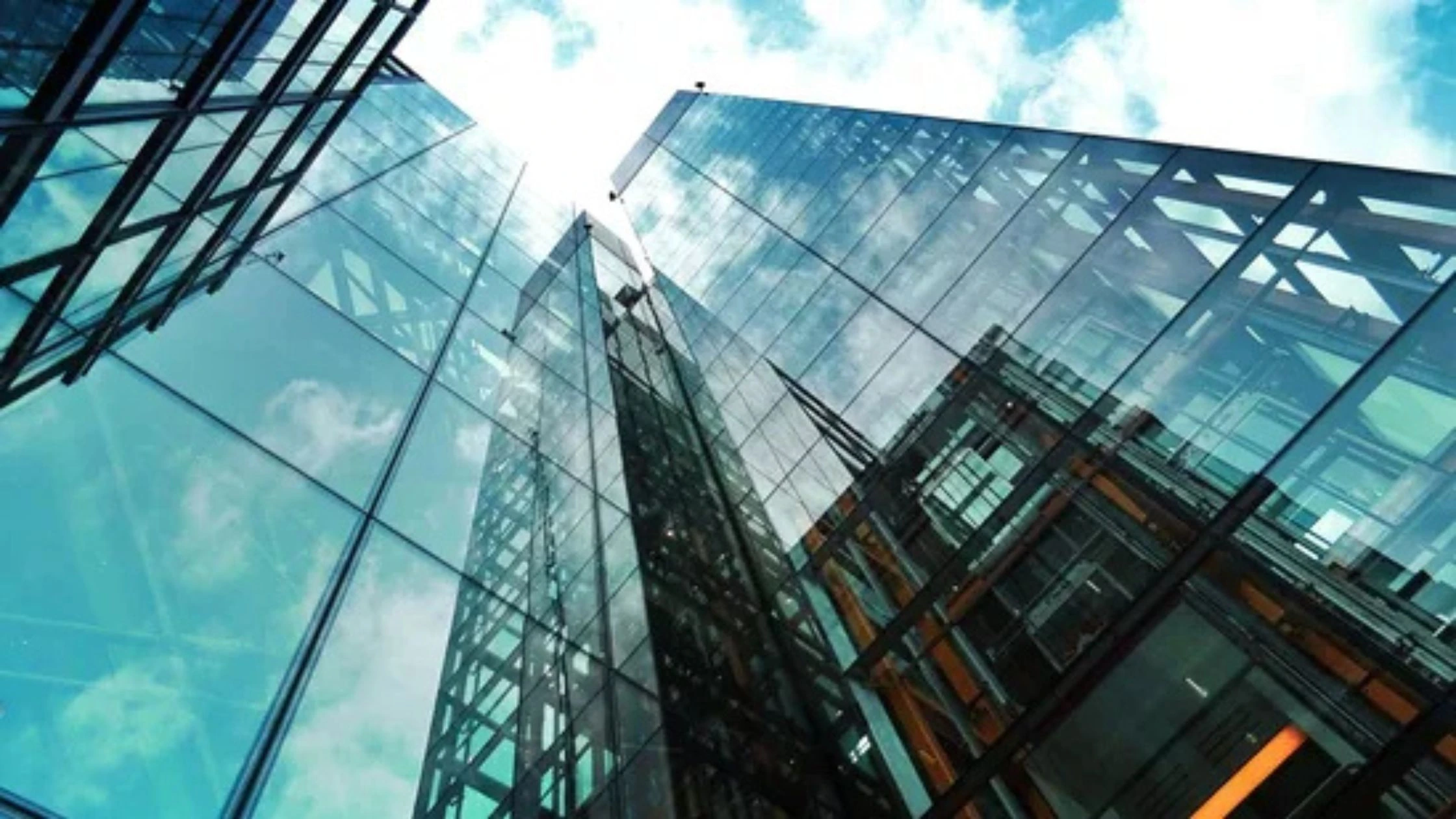Table of Content
The Delhi-Jaipur Super Expressway (NH-352B) is one of the most ambitious infrastructure projects currently under development in India. Known as a lifeline project for North-West India, this upcoming expressway is designed as an eight-lane, access-controlled greenfield corridor that will revolutionize travel between Delhi and Jaipur.
For decades, travelers between the national capital and Rajasthan’s Pink City have depended on NH-48, which is now heavily congested due to increasing industrial traffic, passenger vehicles, and tourism inflow. The new NH-352B will act as a high-speed alternative, reducing the journey from nearly six hours to just three hours. This is not only a massive time-saving upgrade but also a driver for economic growth, tourism expansion, and real estate development along the route.
The expressway is expected to be fully completed by 2027, and it is already being hailed as a project that will reshape the social, industrial, and commercial dynamics of the entire Delhi–Jaipur corridor.
Project Overview
The Delhi-Jaipur Super Expressway (NH-352B) will span 195.1 km from Gurgaon in Haryana to Chandwaji near Jaipur in Rajasthan. Developed under the Engineering, Procurement, and Construction (EPC) model, the project will require massive investments running into several thousand crores, showcasing the scale and importance the government has placed on this corridor.
Key aspects of the project include:
- Length: 195.1 km
- Lanes: Eight-lane expandable to 12 in the future
- Design Speed: 120 km/h
- Completion Target: 2027
- Implementing Agency: National Highways Authority of India (NHAI)
The EPC model ensures that the government maintains greater control over construction standards while private contractors execute the building work. This is vital for a project of this scale where safety, quality, and durability cannot be compromised.
Unlike NH-48, where bottlenecks, toll plazas, and mixed traffic cause delays, NH-352B will be access-controlled, meaning entry and exit will be regulated through designated interchanges. This ensures uninterrupted flow of traffic, smoother logistics, and fewer chances of accidents.
Also Read: Delhi-Dehradun Expressway: Latest Updates, Route Map & Expected Opening
Route and Districts Covered
The Delhi-Jaipur Super Expressway (NH-352B) has been strategically planned to pass through 423 villages across seven districts in Haryana and Rajasthan. This route selection is significant as it not only reduces travel time but also brings economic opportunities to semi-urban and rural regions along the alignment.
- Starting Point: Gurgaon (Haryana)
- Ending Point: Chandwaji (Rajasthan)
Districts Covered
- Haryana: Gurgaon, Jhajjar, Rewari, Mahendragarh
- Rajasthan: Alwar, Shahpura, Jaipur
Major Towns and Landmarks
- Gurgaon & Manesar – Among India’s largest IT and industrial hubs.
- Neemrana – A booming industrial zone, particularly with Japanese and Korean investments.
- Rewari & Bawal – Key logistics and warehousing locations.
- Shahpura – Emerging as a residential extension of Jaipur.

The expressway will open up new growth corridors for these towns, reducing dependence on Delhi NCR while distributing development more evenly across the region.
Construction Status and Timeline
The project has been divided into packages, covering the Haryana and Rajasthan stretches separately. This modular approach ensures faster execution and localized problem-solving.
- Land Acquisition: About 90% of the land has already been secured, one of the biggest hurdles in such projects.
- Haryana Section: Work between Gurgaon and Rewari is progressing rapidly, with roadbed preparation in advanced stages.
- Rajasthan Section: Initial groundwork, including earthmoving and foundation-laying, has begun in districts like Alwar and Shahpura.
The completion deadline is 2027, though some stretches may open earlier for public use. Once operational, the expressway will provide a world-class driving experience comparable to global standards.
Key Features of Delhi-Jaipur Super Expressway
The NH-352B expressway is being developed as a future-ready highway with world-class features, ensuring safety, speed, and sustainability.
- Eight-Lane Access Control: Smooth traffic movement with minimal congestion.
- 120 km/h Speed Limit: Allowing vehicles to cover longer distances in shorter times.
- Safety Systems: CCTV surveillance, automated incident detection, SOS emergency booths, and patrolling vehicles.
- Eco-Friendly Initiatives: Large-scale plantation drives, scientific drainage systems, and solar-powered lighting at toll plazas.
- Service Roads: Dedicated service lanes for local traffic to prevent accidents.
- Smart Tolling: Electronic toll collection (ETC) for seamless movement.
These features will not only improve user experience but also enhance road safety and minimize environmental impact.
Related Infrastructure Projects
The Delhi-Jaipur Super Expressway (NH-352B) is not being built in isolation; it is part of a larger highway ecosystem that includes other mega projects:
- Delhi-Mumbai Expressway (Bandikui Spur): Direct linkage to India’s longest expressway.
- Dwarka Expressway: Offering faster connectivity from Delhi to Gurgaon.
- Jaipur-Bandikui Expressway: Strengthening intra-Rajasthan road networks.
This interconnectedness ensures that NH-352B will act as a vital economic artery, linking northern India to western industrial hubs.
Toll Rates and User Charges
The toll charges for NH-352B have not been finalized, but they are expected to follow the standard model adopted by other expressways.
Expected Toll Rates
- Cars/Light Vehicles – ₹2–2.5 per km
- Buses/Trucks – ₹6–7 per km
- Multi-axle Vehicles – ₹8–10 per km
For regular commuters, especially industrial workers and logistics companies, monthly passes may be introduced to reduce overall costs.
Though tolls will increase travel expenses slightly, the savings in time and fuel will outweigh the additional cost, making it highly beneficial for both personal and commercial users.
Economic and Real Estate Impact
The expressway is expected to be a growth engine for North-West India.
Industrial and Business Expansion
- Logistics and Warehousing: Cities like Manesar, Bawal, and Neemrana will attract new warehousing hubs.
- Manufacturing Units: Easier connectivity will attract domestic and foreign investment.
- Tourism Boost: Jaipur, Neemrana Fort, and nearby attractions will see higher tourist footfall.
Real Estate Growth
The Delhi-Jaipur Super Expressway (NH-352B) will act as a catalyst for real estate expansion:
- Gurgaon & Manesar: Rising demand for luxury housing and commercial spaces.
- Neemrana & Alwar: Affordable housing and industrial townships becoming hotspots.
- Jaipur: Expansion of luxury residential projects, resorts, and retail spaces.
Property experts predict a 15–20% appreciation in prices along the expressway corridor in the next five years. Rental demand will also surge as industries attract workers and professionals.
Benefits of Delhi-Jaipur Super Expressway
The benefits of NH-352B extend far beyond faster travel:
- Travel time reduced from 5–6 hours to 3 hours.
- Decongestion of NH-48, reducing traffic bottlenecks.
- Fuel and maintenance savings for commuters.
- Job creation in construction, logistics, hospitality, and retail.
- Boost to rural development by connecting villages to urban hubs.
- Environmental advantages through lower emissions due to reduced idling and congestion.
Also Read: Nagpur-Vijayawada Expressway: Facts, Advantages, and Real Estate Opportunities
Challenges and Road Ahead
Despite its promise, the Delhi-Jaipur Super Expressway faces some hurdles:
- Land Acquisition Disputes in certain villages.
- Environmental Clearances, particularly regarding tree felling and land use.
- Funding Challenges due to rising construction costs.
- Maintenance Requirements, as expressways demand high upkeep standards.
The government and NHAI are addressing these issues proactively, making it likely that the project will stay on track for its 2027 completion deadline.
Conclusion
The Delhi-Jaipur Super Expressway (NH-352B) is poised to be a game-changing project that will reshape connectivity, commerce, and lifestyle across the Delhi–Jaipur corridor. By slashing travel time, easing logistics, fueling real estate growth, and generating employment, the expressway will have a long-lasting impact on North-West India’s development trajectory.
Once operational, NH-352B will not only reduce the load on NH-48 but also serve as a strategic economic lifeline, benefiting commuters, industries, and investors for decades to come.
For anyone looking at real estate, business expansion, or improved travel convenience, the Delhi-Jaipur Super Expressway represents an unmatched opportunity in the coming years.

_1756805259.webp)





Ans 1. The Delhi-Jaipur Super Expressway, also known as NH-352B, is a 195.1 km, eight-lane, access-controlled greenfield corridor being developed to reduce travel time between Delhi and Jaipur.
Ans 2. The expressway is expected to be fully completed by 2027, though some sections may open earlier.
Ans 3. It will cut travel time from 5–6 hours on NH-48 to just 3 hours, offering a smooth high-speed alternative.
Ans 4. It will cover 423 villages across 7 districts: Gurgaon, Jhajjar, Rewari, Mahendragarh (Haryana) and Alwar, Shahpura, Jaipur (Rajasthan).
Ans 5. The expressway will include eight lanes (expandable to 12), 120 km/h speed limit, CCTV surveillance, smart tolling (ETC), service roads, and eco-friendly initiatives.
Ans 6. Expected tolls are around ₹2–2.5 per km for cars, ₹6–7 for buses/trucks, and ₹8–10 for multi-axle vehicles. Monthly passes may also be introduced.
Ans 7. Real estate prices in Gurgaon, Manesar, Neemrana, Alwar, and Jaipur are projected to rise by 15–20% due to better connectivity and industrial growth.
Ans 8. The expressway will boost logistics, warehousing, manufacturing, and tourism, especially in hubs like Manesar, Bawal, and Neemrana.
Ans 9. Unlike the congested NH-48, NH-352B will be an access-controlled expressway with regulated entry/exit points, ensuring faster and safer travel.
Ans 10. Yes, challenges include land acquisition disputes, environmental clearances, rising construction costs, and high maintenance requirements.